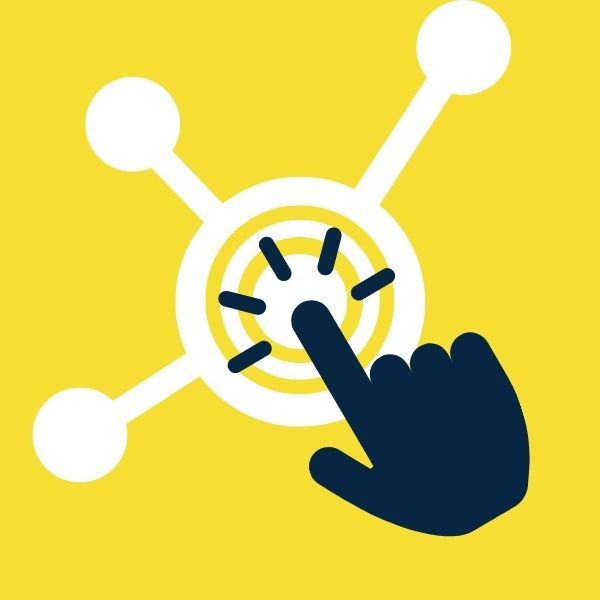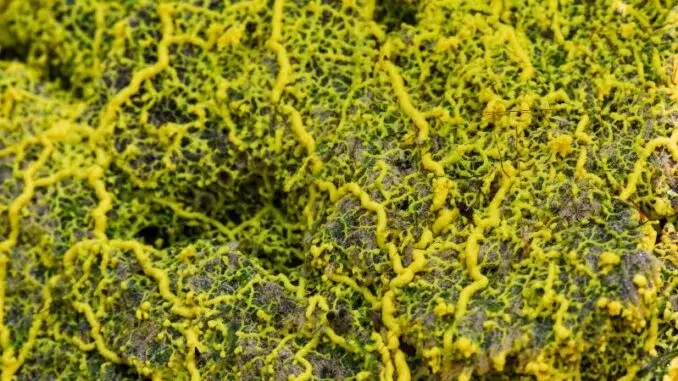
Sarah THOMAS
Have you ever seen a living being stronger than Superman? Something that would survive an axe blow or a gunshot and that never dies? It may seem impossible… However, there is a creature, living on our planet, that is a kind of special, and that has many superpowers. Those creatures are slime moulds and they are even better than superheroes.
Slime Moulds’ Mystery
A slime mould is a living creature that annoys scientists. It can eat without a mouth, digest without a stomach, move without legs and learn without a brain. Yes, that’s right, slime moulds do not have a brain (and neither do they have neurons). We think that the species appeared more than 600 million years ago.
Slime moulds are actually unicellular beings. It means that one slime mould is one single cell. Just so you know, there can be 30 billion cells in the human body. However, slime moulds only have one. It does not mean they are stupid; they are actually pretty intelligent. Scientists have not unravelled the mystery of slime moulds yet: they do not know if they are fungi or animals. Furthermore, in their single cell, slime moulds have millions of nuclei, while human cells have only one.

Amoeba
It is a microorganism which is composed of one cell (unicellular) and can move by deforming itself.
Of course, ‘slime moulds’ is not their scientific name, just their superheroes name. They are called Physarum polycephalum by scientists, and they are amoebae, a type of living beings. Slime moulds are gifted with superpowers, which scientists are trying to understand.
What Are Slime Moulds’ Superpowers?
More than thirty years ago, scientists studied slime moulds for the first time in a lab. At first, they just wanted to know how they could move. They also wanted to learn more about the way slime moulds reconnect with parts of their body that had been cut. Nobody thought they were dealing with a gifted super-powered organism. Many things changed since then!
Slime moulds are budding engineers
When you take the train, you go from one city to another by the shortest way. Engineers imagined the plans of train networks. Can you imagine that a brainless creature can do the same thing? During some experiments, researchers drew maps with oat flakes, which slime moulds love. Oat flakes’ position was identical to that of big cities. When they put a slime mould near those flakes, it recreated the railway network (existing in the real world) by joining the flakes. Engineers could very well start to let slime moulds do their jobs!

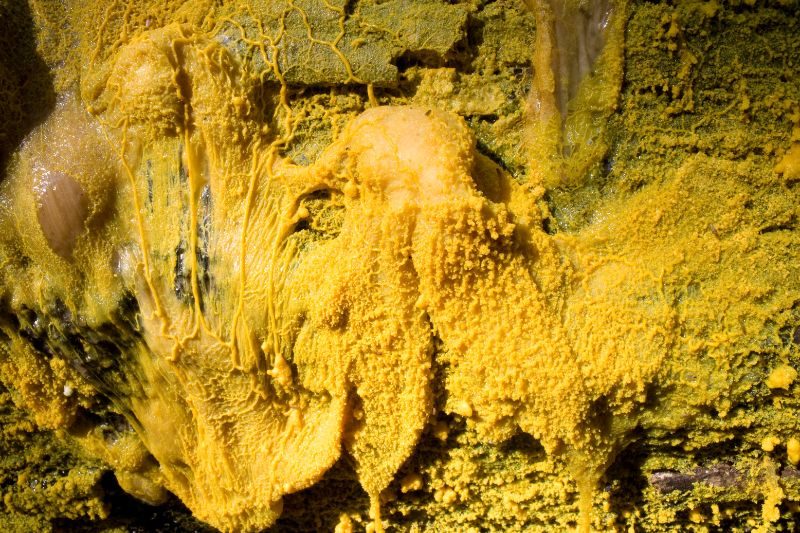
Slime moulds are unparalleled nutritionists
Even if your diet is very healthy, you would still allow yourself to eat pizza now and then. However, slime moulds never cheat! To be a superhero, you need to eat healthy. Even if they were given the choice, they would always go for the healthiest food. To be in perfect health, they need to follow a particular diet: two thirds of proteins, which you can find in meat, and one third of carbohydrates, which you can find in vegetables. Slime moulds’ favourite meal is egg yolk flan!
Slime moulds are unsuspected teachers
As they are brainless, we could think that slime moulds are stupid. Yet, they can learn things. And even better: they can pass on their knowledge. For example, when two slime moulds merge, they exchange their knowledge. When they decide to part, they do not forget, and they can use what they have learnt.
Audrey Dussutour, who conducted many studies on slime moulds at the University of Toulouse in France, admits she does not know exactly how that superpower works because slime moulds do not have neurons to learn in the same way we do. In the future, she would like to test them to see if their experience can change their genes, allowing them to change and to know more about their world.
Slime moulds are immortal Supermen
Last but not least, slime moulds are capable of biological immortality if they live under the right conditions. In 1973, Marie Harries, who lives in the United States, found a spongy yellow thing in her backyard; nobody knew it was a slime mould at the time. To remove it, she cut it, her husband chopped it with an axe, firefighters sprayed it with their water hoses, policemen shot it… But all of that did not change anything! The slime mould survived.[i] Just like Superman, slime moulds are extremely strong: you cannot kill them by cutting them in half. Actually, if you cut a slime mould in half, it can have two reactions: it can heal and merge with its cut parts, or those parts can start living their own life. And that’s not all; if slime moulds can’t find any food or water, they fall asleep, and they do not die. When their surroundings get better, they wake up. When slime moulds sleep, they are called ‘sclerotia’.
The Slime of a Superhero
When they move, slime moulds leave a viscous, translucent substance behind them, just like slugs. We could call that substance slime. Thanks to their slime, slime moulds never forget the places they have already visited. When they explore new places, they leave a track behind them. It is very practical because if they cannot find any food in one place, by leaving that track, they will know they shouldn’t go back there. Actually, that slime acts like an extern memory for slime moulds. It has a repulsive effect on them, which means that a slime mould will avoid its own slime.
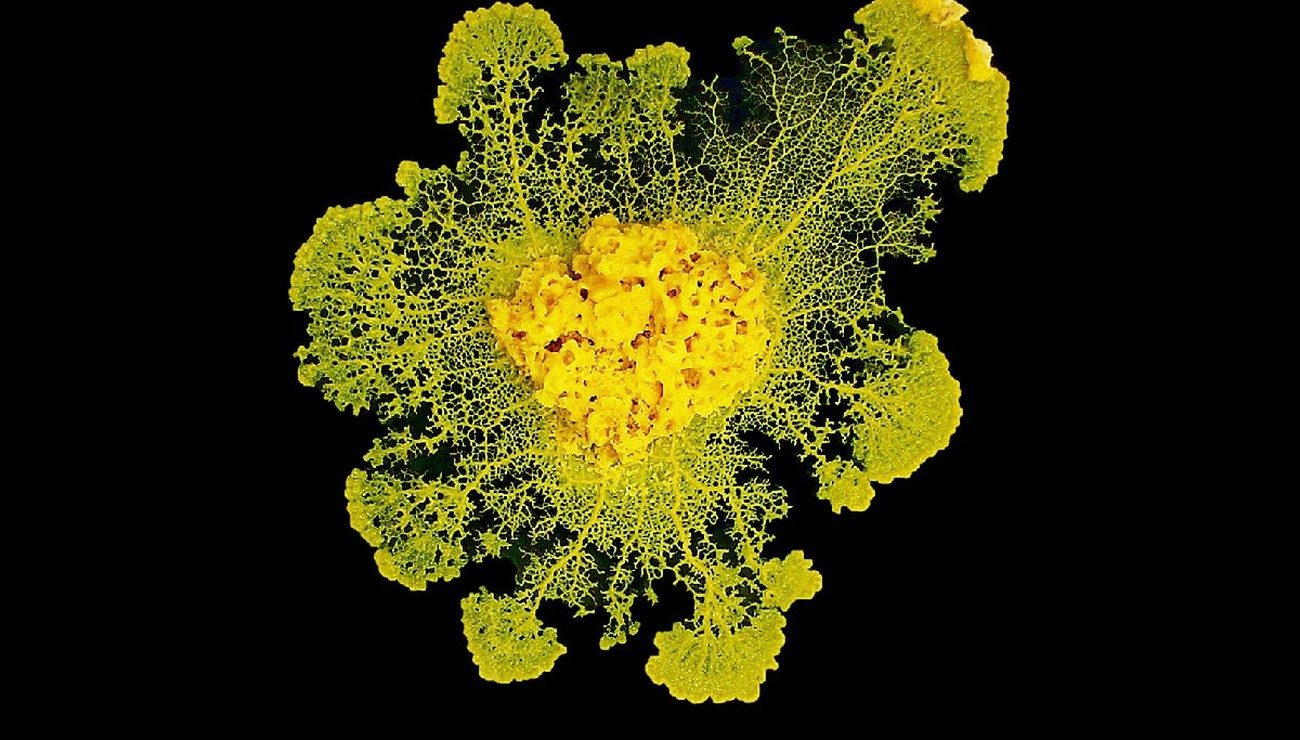
© Audrey Dussutour (CNRS)
To Infinity and Beyond
Do you know Thomas Pesquet? He is a French astronaut who was in charge of the International Space Station (ISS) for 6 months. On the 23rd of April 2021, he took off from Florida, in the United States, to get to the Station. Four months later, a few slime moulds joined him. His mission was to compare the behaviour of slime moulds on Earth and in space. Indeed, slime moulds could behave differently when subject to the gravity of the Earth or to microgravity.

Microgravity
Gravity that is lower than that of the Earth
The experiment, led by Thomas Pesquet, included the study of slime moulds’ behaviour in space. Their behaviour there was compared with that of slime moulds on Earth. Hundreds of thousands of students in France followed Thomas Pesquet’s example. He observed how slime moulds moved in space: from left to right, from front to back or diagonally. Actually, one of the slime moulds did move upward, in 3 dimensions, before going back to sleep. This phenomenon had never been observed on Earth because of gravity.
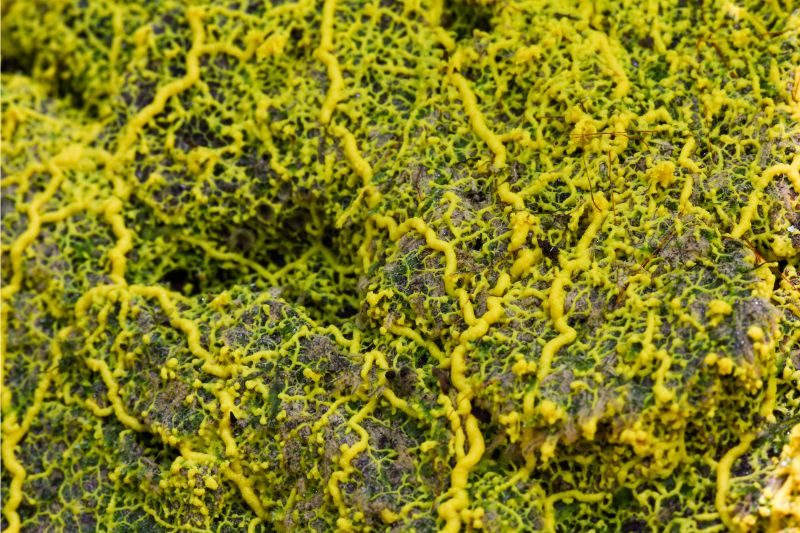
Did you know?
The blob is able to move in the 3 dimensions of space
You’ve just discovered all the superpowers of the strange creature called the blob. After all these discoveries, one could say that he is even stronger than Superman, right?



